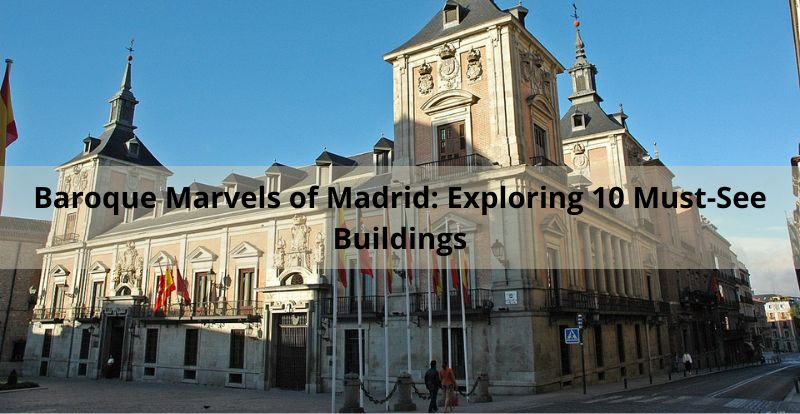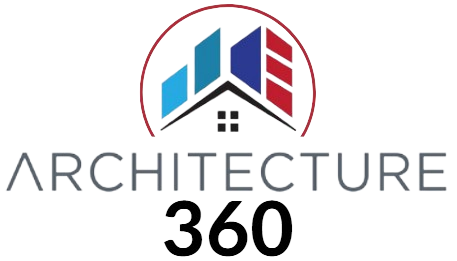Baroque Marvels of Madrid: Exploring 10 Must-See Buildings
Baroque Marvels of Madrid: Exploring 10 Must-See Buildings. The Baroque era in Madrid's architecture flourished primarily during the 17th and 18th centuries, leaving behind a rich architectural heritage that still resonates with the city's character. Characterized by elaborate ornamentation, dynamic facades, domes and towers, the use of Solomonic columns, and a penchant for captivating visual effects, the Baroque style shaped the cityscape of Madrid.
It may interest you: Baroque Architecture in Spain - Masterpieces and Regional Variations
Video: Inside Europe’s finest example of Baroque architecture

elving into the Baroque Treasures of Madrid
Immersing oneself in the architectural wonders of Madrid means embarking on a journey through the Baroque era, a period that shaped the city's skyline with its ornate facades, dynamic structures, and captivating visual effects. From grand palaces to intricate churches, the Baroque style left an indelible mark on Madrid's landscape, inviting visitors to explore its rich cultural heritage through ten essential buildings.
Two Phases of Baroque in Madrid:
Within this period, two distinct phases emerge. Firstly, during the Habsburg rule, there was a proliferation of Spanish architects, notably Pedro de Ribera, known for his ornate style. An exemplary building from this period and architect is the Cuartel del Conde Duque.
In the second phase, with the arrival of Charles III to Madrid, numerous Italian architects were brought to the court. Among them, Sicilian Francesco Sabatini, the mastermind behind the Puerta de Alcalá, left a significant legacy in Madrid, with a style less ornate and more classicist.
Exploring the Essential Baroque Buildings:
1. Royal Palace of Madrid:
The Royal Palace stands as one of Madrid's most iconic buildings and one of Europe's largest royal palaces, spanning 135,000 square meters. Built between 1738 and 1764, upon the ruins of the Real Alcázar, it exemplifies magnificent Baroque architecture. Its façade boasts exquisite ornamentation, complemented by majestic gardens such as the Jardines de Sabatini and Campo del Moro, enhancing its splendor.
2. Plaza Mayor:
No discourse on Baroque Madrid is complete without mentioning Plaza Mayor. With its characteristic arcades and balconies, it serves as one of the city's most significant gathering spaces. Its construction began in 1590 under the patronage of Philip II, with notable architects like Juan Gómez de Mora contributing to its completion by 1619.
3. Church of San Antonio de los Alemanes:
This church, a prime example of Madrid Baroque, showcases the use of cost-effective materials like brick and plaster in its construction. Noteworthy for its elliptical floor plan, it stands out as one of Spain's few churches with such a design. Its interior epitomizes Baroque illusionism, where fresco painting merges with architecture and sculptural elements to create a luxurious, dynamic space.
4. Toledo Bridge:
Exemplifying Churrigueresque Baroque, the Toledo Bridge was constructed between 1718 and 1732 by architect Pedro de Ribera. Spanning the Manzanares River, it features solid buttresses and balustrades adorned with Churrigueresque elements, including limestone statues of Madrid's patrons.
5. Royal Hospice of San Fernando:
Designed by Pedro de Ribera, this building stands out for its Churrigueresque Baroque façade, considered a pinnacle of the architect's work and a jewel of Madrid Baroque. Originally serving as a hospice, it now houses the Museum of Madrid's History, reflecting its adaptive reuse over the centuries.
6. Goyeneche Palace:
Situated in Nuevo Baztán, Goyeneche Palace exemplifies early 18th-century Baroque style. Built between 1709 and 1713, it was the centerpiece of an industrial complex conceived by Juan de Goyeneche, showcasing the integration of architecture and industry during the Baroque period.
7. Church of San Andrés:
Constructed between the 17th and 18th centuries, the Church of San Andrés features a façade adorned with Baroque details and a typical octagonal tower. Its interior boasts ornate altarpieces and stucco decoration, reflecting the opulence of the Baroque era.
8. Royal Monastery of the Incarnation:
Founded in 1610 by Queen Margaret of Austria, this monastery's façade exerted significant influence on subsequent architectural designs. Built between 1611 and 1616, its design by Carmelite friar Fray Alberto de la Madre de Dios reflects the grandeur and elegance of Baroque architecture.
9. Church of San Millán and San Cayetano:
Located on Embajadores Street, this Baroque church began construction in 1669, culminating in 1761. Designed by architects like José de Churriguera and Pedro de Ribera, its granite façade features robust pilasters crowned with composite order capitals, showcasing the richness of Baroque ornamentation.
10. Casa de la Villa:
Designed by Juan Gómez de Mora and completed in 1693, the Casa de la Villa serves as a prime example of Baroque and Herrerian style. Once housing Madrid's City Council, it now stands as a testament to the city's administrative history, reflecting the evolution of Madrid's governance.
The Baroque period left an indelible mark on Madrid's architectural landscape, with these ten essential buildings serving as tangible reminders of the city's rich cultural heritage. From the grandeur of the Royal Palace to the intimate elegance of churches and palaces, each edifice narrates a story of artistic innovation and historical legacy, inviting visitors to immerse themselves in the vibrant tapestry of Baroque Madrid.
Si quieres conocer otros artículos parecidos a Baroque Marvels of Madrid: Exploring 10 Must-See Buildings puedes visitar la categoría Baroque.

Leave a Reply